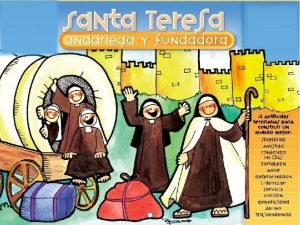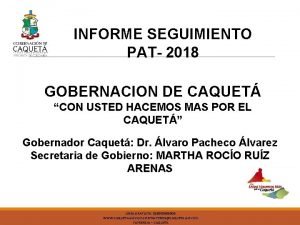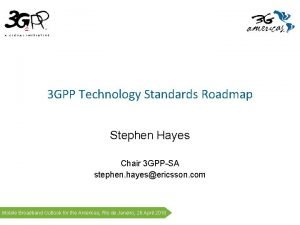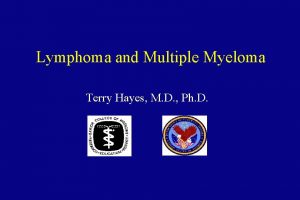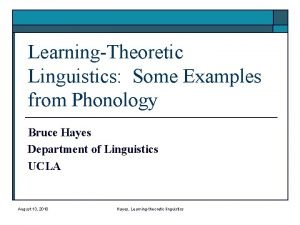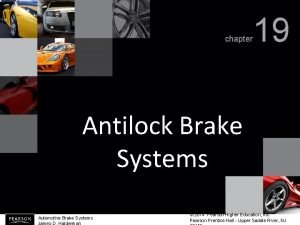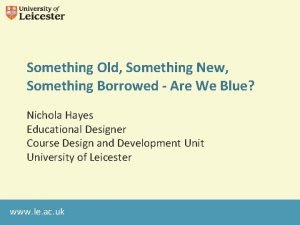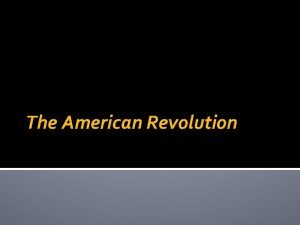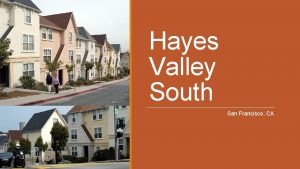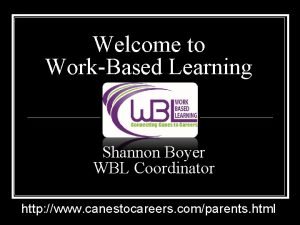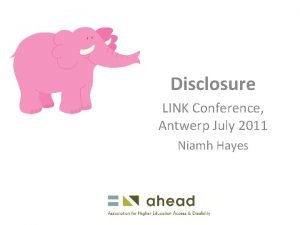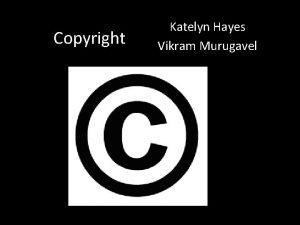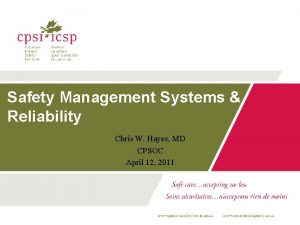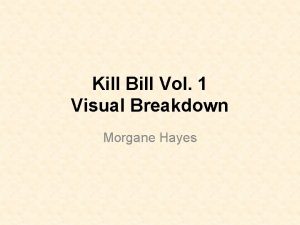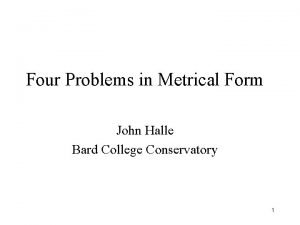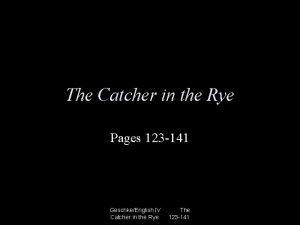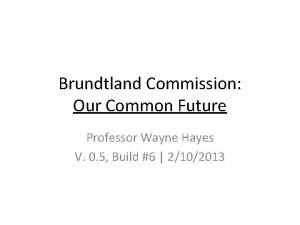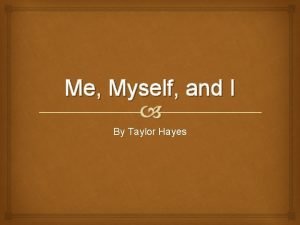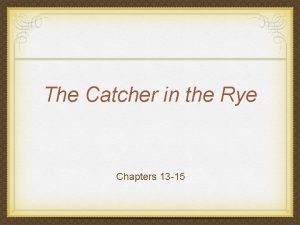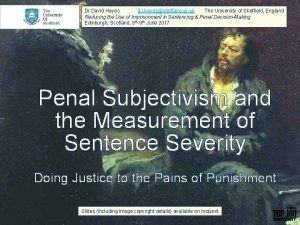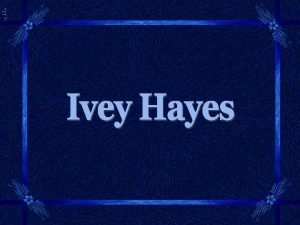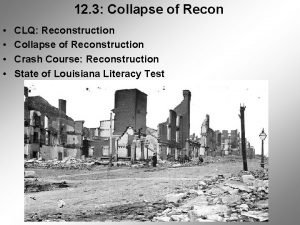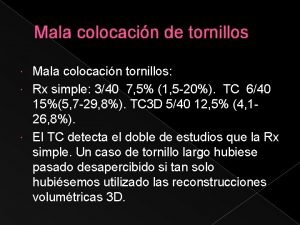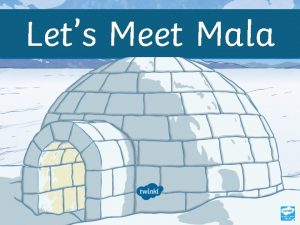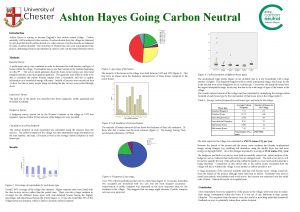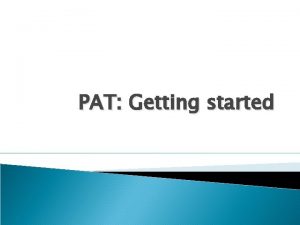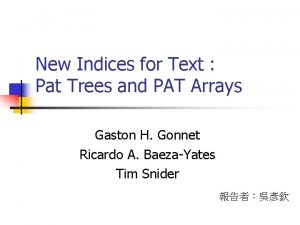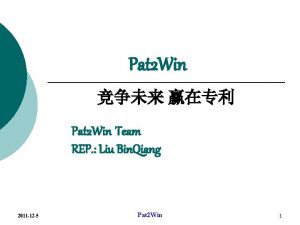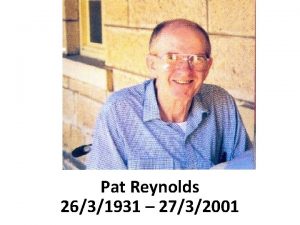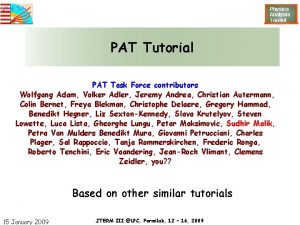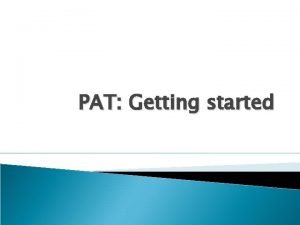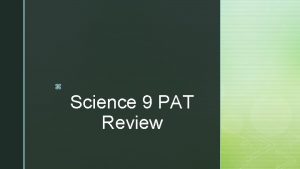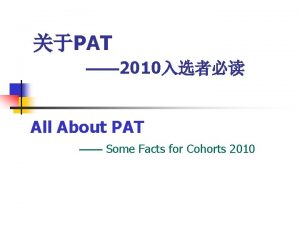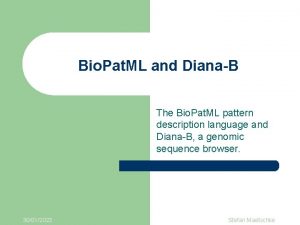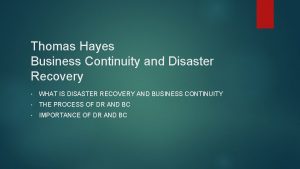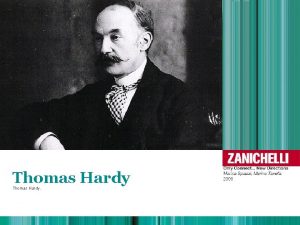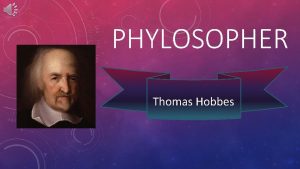Pat Hayes Thomas Reichherzer Thomas C Eskridge Mala






























- Slides: 30

Pat Hayes Thomas Reichherzer Thomas C Eskridge Mala Mehrotra Dmitri Bobrovnikoff Raul Saavedra Collaborative Knowledge Capture In Ontologies http: //coe. ihmc. us/

Concept-Map Ontology Environment Concept mapping is a tested, intuitive, low-entry -cost technique for knowledge capture and composition. OWL is the Semantic Web standard formal knowledge representation and communication between systems. COE uses concept maps to display, edit and compose OWL, in an integrated GUI combining Cmap display with concept search and cluster analysis.

The Semantic Web as a distributed information environment A key part of the Semantic Web vision is that authors of new ontologies can re-use concepts which already occur in other published ontologies. This reinforces the meaning of new concepts by relating them to existing ontological content. Such re-use may provide a way around the classical problems of resolving incompatibilities between rival formalizations. We call this distributed syndication. Examples include FOAF, Dublin Core.

If you know about concept mapping…. . COE is built on top of IHMC Concept Map Tools tool suite, so (almost) anything you can do in normal concept mapping you can also do in COE: adding nodes, moving things around, dragging and clicking, navigating, etc. .

If you know about concept mapping…. . COE is built on top of IHMC Concept Map Tools tool suite, so (almost) anything you can do in normal concept mapping you can also do in COE: adding nodes, moving things around, dragging and clicking, navigating, etc. . BUT in order to understand the imported OWL ontologies, and produce Cmaps which will be output as OWL, users will need to learn, and use, some new conventions. The COE GUI provides a number of new tricks to make users task easier, and COE is also a Web-oriented concept search and clustering tool.

If you know about OWL and the Semantic Web…. . COE allows users to view, edit and compose OWL ontologies without needing to know anything about, or ever look at, XML or RDF. Just looking at OWL ontologies with COE is often very illuminating. The concept map GUI can be learned by SWeb newbies in about half a day.

If you know about OWL and the Semantic Web…. . COE allows you to view, edit and compose OWL ontologies without needing to know anything about, or ever look at, XML or RDF. Just looking at OWL ontologies with COE is often very illuminating. The concept map GUI can be learned by SWeb newbies in about half a day. BUT composing good ontologies still requires some care. COE provides access to concept clusters from published SWeb ontologies, constructed using the Expozé algorithm. This makes visible conceptual and structural relationships between concepts, which go beyond strict OWL inference.

RDF is basically a set of triples, and so is a Cmap… … but OWL is a more complicated language <owl: Class rdf: ID="Choice"> <rdfs: sub. Class. Of> <owl: Class rdf: about="#Control. Construct"/> </rdfs: sub. Class. Of> <owl: Restriction> <owl: on. Property> <owl: Object. Property rdf: about="#components"/> </owl: on. Property> <owl: all. Values. From> <owl: Class rdf: about="#Process. Component. Bag"/> </owl: all. Values. From> </owl: Restriction> </rdfs: sub. Class. Of> </owl: Class>

Putting OWL syntax into a Concept map Basic ideas: Individuals and classes are nodes, properties are links. Sub- links are blue, exact definitions are red:

Putting OWL syntax into a Concept map Restrictions on properties are indicated by textual labels under the property name. Property value is restricted by value and cardinality root class is defined to be an intersection

Putting OWL syntax into a Concept map Domains and ranges, properties of properties and other exotica are indicated using graphical conventions:

Putting OWL syntax into a Concept map Domains and ranges, properties of properties and other exotica are indicated using graphical conventions: Functional property shown by annotation Blue edges indicate subclass Dotted edges indicate domain and range

Using COE can be used as: • an ontology viewer • an ontology editor • a concept search engine. Integrating these abilities into one user interface is important for SWeb-style ontology development, where re-use of concepts from existing ontologies on the network is a basic mechanism for achieving interoperability. ags: = http: //www. agls. gov. au/rdf/1. 2/agls. rdfavailability dc: = http: //purl. org/dc/elements/1. 1 owl: = http: //www. w 3. org/2002/07/owl

Using COE as an ontology viewer COE imports OWL/RDFS/RDF ontologies from XML files (or URIs using http) and displays them as a new concept map. Layout is automatic. Stored ontology Cmaps can be modified and archived using Cmap Tools.

Using COE as an ontology viewer The navigation tool provides a useful overview of a large ontology

Using COE as an ontology viewer The COE view provides a rapid visual assessment of ontology content and 'style', and helps locate the most salient concepts. No color, no long labels; mostly plain RDF Lots of dashed lines: mostly about properties. Nodes with large convergence are generic domains and ranges.

Using COE as an ontology viewer The COE view provides a rapid visual assessment of ontology content and 'style', and helps locate the most salient concepts. Many blue lines: a large, complex, class hierarchy Simple class hierarchies are easy to recognize

Using COE as an ontology viewer COE allows the same concept node to be copied to several places on the map surface, reducing clutter.

Using COE as an ontology viewer The auto-layout can be tuned to user preferences, and layout can be adjusted manually, and finished Cmaps archived for reference.

COE user interface additions Selecting a link label opens a drop-down menu of link names and components

COE user interface additions Templates of commonly used COE structures can be dragged into a Cmap

COE user interface additions Templates of commonly used COE structures can be dragged onto a node in a Cmap

COE user interface additions Nodes can be easily merged with a control-shift drop

Using COE as an ontology editor COE will export any Cmap into OWL. The output is always syntactically correct OWL/XML: any parts that are not translatable into OWL are ignored. This allows 'formal' and 'informal' content to be mixed in the same Cmap, and informal Cmaps to be gradually extended by adding OWL content. Re-importing the OWL file as a Cmap gives a visual 'reality check' on the state of the formalization. Complex ontologies may be composed in parts as separate Cmaps in an ontology folder, and COE will export them as a single OWL file.

Using COE as a concept search engine Distributed syndication depends on composers of new content having easy access to concepts, and enough information to enable them to make rational choices between existing concepts or inventing their own. COE provides a simple text search through archived Concept Maps in the local files and the IHMC Public Ontology Server. The COE architecture provides for a variety of more sophisticated tools for displaying concept information. A simple graphical interface to the Expozé concept clustering system is incorporated into the current version of the software, to display clusters of concepts in OWL ontologies currently available on the Semantic Web. Concepts may be used to identify and retrieve related ontologies, and be incorporated into new Cmaps.

Context Exposition in COE/MVP-CA

Vicinity Concepts for Region

Expozé-Query Panel • Expozé-Query web-service allows a user to search through clustered ontologies in a COE repository. • Grouping of concepts performed through an agglomerative clustering algorithm which uses various semantic and structural distance-measures across axioms. • As clusters are merged, a term stabilizes when it appears only in a single cluster. The 'vicinity concepts' display shows the cluster at the stage when the query term stabilizes. • The outer circle presents terms that stabilize with the query term; the inner circle presents terms that stabilized earlier in the clustering process.

Importance of vicinity concept • Looking at each axiom in isolation provides a myopic view of the concept terms • Examining a term across various related axioms allows users to rapidly understand it in its context • Vicinity terms provide a quick intuitive guide into likely similarity of intended meaning of the concepts in different ontologies • Aids exploratory ontology building through fortuitous reuse opportunities

Context Exposition in COE/MVP-CA
 De devociones absurdas y santos amargados líbranos señor
De devociones absurdas y santos amargados líbranos señor Pat pat seguimiento
Pat pat seguimiento Stephen hayes ericsson
Stephen hayes ericsson Terry hayes md
Terry hayes md Amano hayes valley
Amano hayes valley Helen hayes rehabilitation hospital
Helen hayes rehabilitation hospital Kelsey hayes 310 abs module
Kelsey hayes 310 abs module Hayes vle
Hayes vle Dr niamh hayes
Dr niamh hayes Swampfox mohawk
Swampfox mohawk Hayes valley south
Hayes valley south Brandi boyer interview
Brandi boyer interview Traditional ira hamilton
Traditional ira hamilton Dr niamh hayes
Dr niamh hayes Adams hayes and hopson 7 stage model
Adams hayes and hopson 7 stage model Katelyn hayes
Katelyn hayes Adien ficci
Adien ficci Morgane kerjean
Morgane kerjean The farmer in the dell unitary or strophic
The farmer in the dell unitary or strophic Sally hayes catcher in the rye
Sally hayes catcher in the rye Van galen modeli nedir
Van galen modeli nedir Shana hayes
Shana hayes Rylie hayes
Rylie hayes Wayne b. hayes
Wayne b. hayes Taylor hayes bio
Taylor hayes bio Barbara douglas counselling psychologist
Barbara douglas counselling psychologist Who is sunny in catcher in the rye
Who is sunny in catcher in the rye Alexander hayes
Alexander hayes David hayes sheffield
David hayes sheffield Ivey hayes
Ivey hayes Rutherford b hayes
Rutherford b hayes
